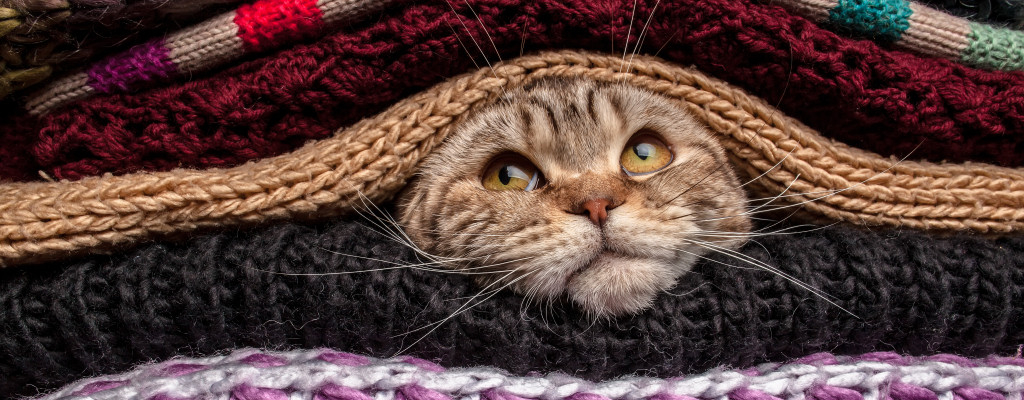Fall officially begins September 22nd, and that means it’s just around the corner! We’re already starting to see the color of the leaves changing in some areas, so it’s just a matter of time before we trade our nice warm days for cool afternoons and cold evenings.
But, just because the weather is turning colder doesn’t mean you can’t stay comfortable at home. You can start to use your furnace or throw some logs in the fireplace to keep cozy and warm inside when the weather outside isn’t so great.
But before you do, it’s wise to run through our fall home preparation checklist. Spending a few hours now preparing your home for the changing of the seasons will save you from repairs and aggravation (and uncomfortably cold nights) later.
Check for window and door drafts
It doesn’t really matter how efficient your furnace is or how warm it can make your home; if there are leaks, it’ll always have to work harder than it needs to. Checking for drafts and gaps in your windows and doors now will also help save you money on energy costs. If your furnace doesn’t need to work as hard to heat your home, it won’t be using energy all the time and running up your utility bill.
To check for drafts, feel for them with a wet hand. Slowly and steadily pass your hand along the edges of your windows and doors and feel for changes in temperature and/or a slight breeze. If you feel air movement at all, the window or door will need to be recaulked. Using a candle will also reveal leaks if you can’t feel anything with your hand. If the flame flickers near the window, air is getting through and letting your furnace’s hard work escape outside.
For additional efficiency, invest in heavy drapes or thermal curtains. Thin, sheer curtains let cold air pass through, while a thicker curtain acts as an insulator between your windows and your home’s interior. Cold air gets trapped between the window and curtain, reducing its influence on your indoor temperatures.
Have your furnace professionally inspected
Before you begin to use your furnace for the season, it’s wise to have it inspected by one of our HVAC experts. During our inspection, we’ll check for any leaks, test your system to make sure it’ll run efficiently, replace the filter, and perform a carbon monoxide (CO) check. Inspecting – and correcting, if needed – these items now will enable you to run your furnace worry-free throughout the fall and winter.
It’s also important to keep extra filters on hand and replace them at least every few months (we recommend changing them monthly if you have pets). Because your doors and windows will be closed for months due to the cold weather, dirt, dust, and other airborne pollutants have no way of to escape your home – aside from being trapped in the filter. Inspect it periodically to see how contaminated it is and replace it frequently to keep your furnace system running efficiently and keeping your air clean.
Winterize your air conditioning system
When your furnace is on, your air conditioning is off. Since your AC won’t be used during the fall and winter months, you can cover your outdoor condenser unit to shield it from the harsh elements. Getting covered in snow, smothered in fallen leaves, and frosted at night puts a strain on your air conditioner’s components. Preventing these from adversely affecting your unit will save you money and aggravation in the long run.
Add a programmable or smart thermostat
It’s always nice to return home to a cozy warm house, but running the heat all day to make it that way is expensive. Adding a programmable or smart thermostat will help your system regulate your home’s temperatures more efficiently.
Some smart thermostats can also learn your behaviors and pre-heat your home just before you arrive, so you enter a comfy home without wasted energy use when you’re not there. If you prefer a cooler bedroom to help you sleep, you can set your thermostat so this happens automatically versus having to lower the temperature setting every evening.
Prepare your humidifier
Cold air is typically drier, and it can wreak havoc on your skin and even negatively affect the way you feel. The ideal relative humidity for comfort is about 40-50%. In the fall and winter, humidity can be as low as 33% on average, and this is a difference you can feel. A humidifier adds humidity back into your home’s air.
If you already own a humidifier, and it’s been sitting idle during the warm months of summer, now is the ideal time to clean and prepare it. The best way to do clean a humidifier is with white vinegar. Simply fill the water reservoir of your humidifier with vinegar, allow it to sit awhile, then use a scrub brush to remove any residue that has accumulated. Rinse the components thoroughly, reassemble the unit, fill it with water, and enjoy comfortably humid air in your home.
Clean your fireplace and chimney
If your home has a fireplace, have it and your chimney cleaned in preparation for use in the fall and winter. After burning a few logs, you’ll notice a buildup of charcoal and ash along the interior walls of your fireplace. If you start using it again this year without cleaning it, that ash can enter the air in your home. Minimize your family’s exposure to any remnants of last year’s fires by cleaning your fireplace and chimney. This will also ensure that the smoke produced from burning wood can move up through your chimney unencumbered. Smelling like a campfire is fine after a weekend in the mountains, but it’s not so nice when it’s happening in your own home.
Install modern lighting
Another piece to consider is updating the lighting in your home. The upcoming time change and winter’s shorter days start to feel like you’re living your life in the dark. You can beat those winter blues with enhanced lighting in your home.
Bright, warm traditional incandescent bulbs will keep that seasonal affective disorder away, but they’ll also run up your electric bill. Instead, install energy-efficient LED and compact fluorescent (CFL) light bulbs that use less energy than those old, inefficient ones.
Winter is difficult enough when you’ve prepared for it – don’t go into it neglecting your home and making harder than it has to be. Do these quick and easy tasks when fall arrives, and you’ll go into the colder months with confidence and in comfort.


Comments are closed